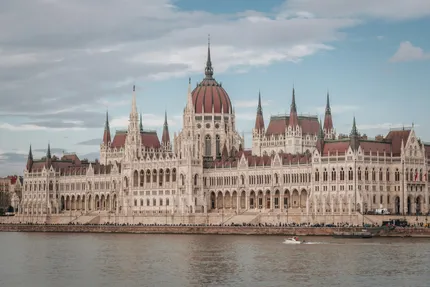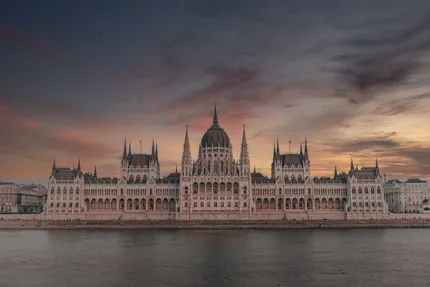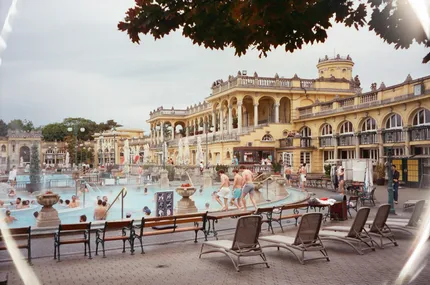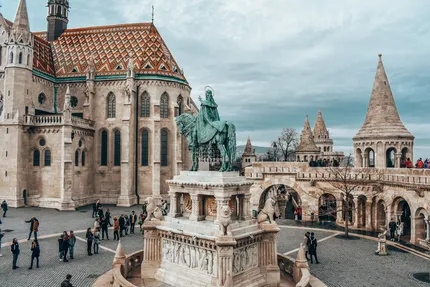CityTouring

City trip to Budapest
HungaryBudapest, Hungary’s vibrant capital, is a city that beautifully blends history with modernity. Divided by the majestic Danube River, it is often referred to as the 'Pearl of the Danube', flaunting stunning architecture like the grand Buda Castle, the neo-Gothic Parliament Building, and the stunning St. Stephen's Basilica. The city's thermal baths, like the iconic Széchenyi and Gellért, offer a soothing experience.
For those interested in history, a visit to the House of Terror or the Museum of Fine Arts can be both enlightening and moving. The city's vibrant spirit is further highlighted by its bustling food scene, offering everything from traditional Hungarian dishes to modern culinary delights. Besides, the ruin bars in the Jewish Quarter provide a unique nightlife experience with their exciting decor and lively atmosphere.

Buda Castle
A historical castle complex in Budapest, offering panoramic views of the Danube and housing the Hungarian National Gallery and the Budapest History Museum.

Parliament Building
An iconic Gothic Revival architectural masterpiece along the Danube River, it's one of Europe's oldest legislative buildings. Guided tours provide access to its grand interiors and rich history.

Széchenyi Thermal Bath
One of Europe’s largest and most famous thermal baths, renowned for outdoor and indoor pools, saunas, and wellness treatments, set in a beautiful Neo-Baroque building.
Budapest is a perfect destination for history enthusiasts who appreciate both architectural splendors and the sobering lessons of the past since the city offers extensive museums and historical sites. It's also a haven for foodies eager to explore central European cuisine, with a modern twist available at numerous innovative restaurants. Additionally, travelers seeking relaxation can immerse themselves in the city’s famous thermal baths. The lively nightlife, characterized by the novel ruin bars, caters to young travelers and party-goers looking for a distinctive experience.
Families can find plenty to explore, including parks and interactive museums suitable for children. Urban explorers will delight in Budapest's complex history and vibrant cultural scene. This exciting mix makes it a multifaceted city perfect for a short city trip.

Best time to visit Budapest
The best time to visit Budapest is from March to May and September to November when the weather is pleasantly mild, and the tourist crowds are more manageable. During these months, visitors can enjoy the beauty of spring blooms or the vibrant autumn colors.
More activities and things to see in Budapest:
Fisherman's Bastion
A neo-Gothic and neo-Romanesque fortress on the Buda side offering stunning views of the city. It’s a popular spot for both history enthusiasts and photographers.
Andrássy Avenue
A grand boulevard known for its beautiful facades, luxury boutiques, and landmarks, like the Hungarian State Opera House, a UNESCO World Heritage Site.
Great Market Hall
A bustling market offering traditional Hungarian food, crafts, and souvenirs in a majestic indoor space. Ideal for tasting local pastries and buying paprika.
House of Terror
A museum detailing Hungary's history of fascist and communist regimes during the 20th century, housed in a building with powerful exhibits and stories.
Dohány Street Synagogue
The largest synagogue in Europe, featuring Moorish Revival architecture. It includes a museum and memorial dedicated to the victims of the Holocaust.
St. Stephen's Basilica
A neo-classical cathedral in Budapest, dedicated to the first King of Hungary. Its dome offers panoramic views of the city.
Ruin Bars
Unique bars in the former Jewish Quarter, creatively set in ruined buildings or spaces, famous for their unique decor and vibrant nightlife.
Getting around in Budapest
Budapest is a highly walkable city, with many of its key attractions located around the city center and along the Danube River. Its public transportation network is extensive, including trams, buses, and a metro system, making it convenient to explore all corners of the city. Cycling is increasingly popular, and bike-sharing systems are widely available. The city's terrain and infrastructure are quite accommodating for cyclists. For those planning to explore the surrounding areas or stay in the city for an extended period, renting a car might be practical, but it's generally not necessary for city exploration due to the robust public transport options. Taxis and ride-sharing services are also readily available for more direct travel. Consider purchasing a Budapest Card for unlimited travel on public transportation and discounts at various attractions.
Getting to Budapest
To reach Budapest, flying into Budapest Ferenc Liszt International Airport is the primary choice, offering flights from numerous global cities. The airport is about 16 kilometers from the city center and is well-connected by an airport shuttle bus and taxis. For people who want to travel to the city via rail, Budapest is accessible via international trains from major European cities such as Vienna, Prague, and Bratislava, making it a convenient hub for Central European travel. The city's main train stations, Keleti and Nyugati, offer frequent connections. Long-distance buses also connect Budapest with several European destinations, with services like FlixBus operating regular routes. This variety of transportation options makes Budapest an accessible city for travelers coming from different parts of Europe and beyond.